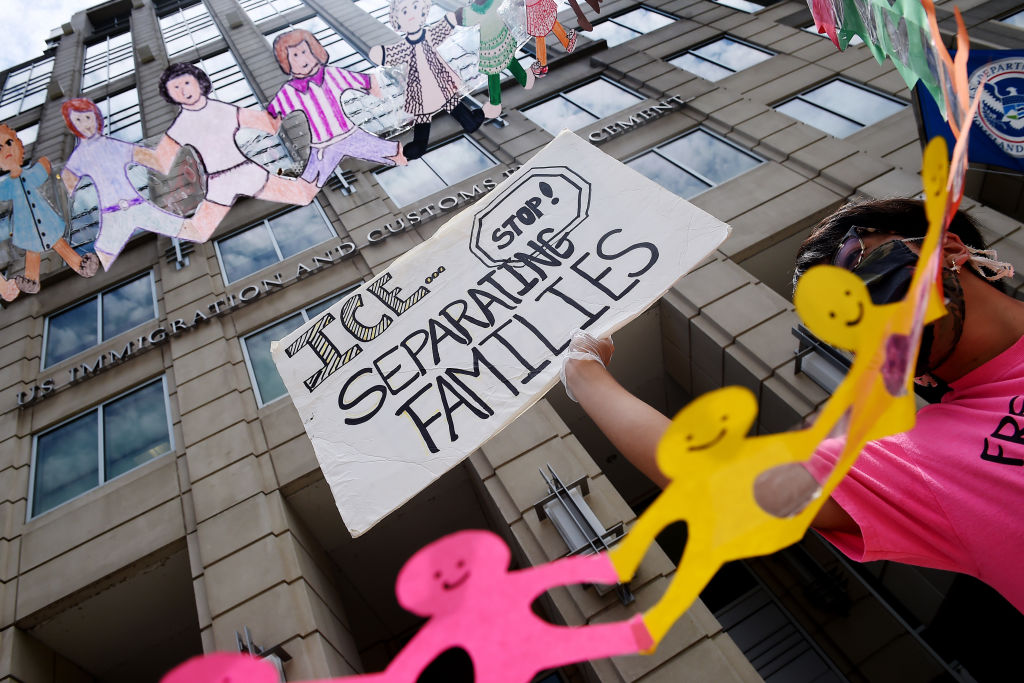It is a human instinct to divorce the horrors from ourselves when we learn about injustice.
Dawn Wooten, a nurse at the Irwin County Detention Centre (ICDC) in Georgia, recently filed a complaint claiming that immigrant women were receiving hysterectomies without full consent or for uncertain medical reasons. These reports were so chilling that most of us rationalized this evil as being contained on the other side of the barbed wire, apart from us and our country — an irregularity.
It makes sense that we think this way. As headlines correctly compare the events at this detention facility to some of the darkest pages of medical history, such as the horrendous experiments conducted in Nazi concentration camps, it is terrifying to think that this inhumanity is built into our country. Yet we must examine how what took place on the border could even be possible in the year 2020.
The truth is: forced hysterectomies aren’t an anomaly.
This practice has a long and sordid history. For decades, hysterectomies have been the most common non-obstetric surgery in women. While we should be astounded by these surgeries at the US border, mass hysterectomies are nothing extraordinary: they are a standard of care for all women in this country.
Hysterectomy: A ‘Treatment’ by Default
Each year approximately half a million hysterectomies are performed in the United States. More than 80 percent of these are driven by noncancerous conditions. These staggering statistics should make us all wonder why there are so many invasive surgeries taking place and why there isn’t more emphasis on preventative or alternative treatments.
This isn’t even new news. In the 1990s, hysterectomies reached their peak popularity, with more than 600,000 surgeries performed each year. One would think this would be indicative of a nation full of unhealthy uteri. However, the rates of hysterectomy could not be completely predicted by underlying medical needs.
Instead, the numbers were influenced by external factors, including race, geography, and even the gender of the patient’s gynecologist. Gradually the rates of hysterectomy overall declined, but a careful analysis of the trend revealed something more sinister. The decrease in cases was largely for white women, whereas Black women continued to rise steadily.
An often-cited explanation for this difference is that Black women have a higher incidence of uterine fibroids — a common indication for hysterectomy — and, therefore, require more hysterectomies. This doesn’t fully explain the difference. Even if we acknowledge that there might be an underlying clinical contribution, it still cannot account for the full discrepancy between the rates of Black and white women.
After accounting for a multitude of factors, the unsettling fact remains that Black women are almost four times more likely to have a hysterectomy than white women. The moderate decrease in hysterectomies overall has only succeeded in further highlighting the stark disparity in that some women’s uteri are treated differently than others.
Disposable Uteri
Maybe the problem here goes beyond misinformed medical experiments, dark genocidal urges, and the long arm of systemic racism. Maybe the reason we are still talking about forced hysterectomies taking place in the year 2020 is rooted in a fundamental lack of respect for the female body.
The anatomical and functional descriptions of female sexual organs have been mostly conceptualized through the male perspective. The female sexual organ has been mostly considered to be “a masculine organ turned back upon itself” and serving its purpose only in relation to the male sex organ. This vantage minimizes the inherent self-possession that a woman has over herself and makes it increasingly easy to allow one’s own organs to be taken if they no longer serve their most recognized functions.
In our biological and medical categories, the uterus does not share the same dignity as the prostate. Despite many more cases of prostate cancers than uterine or endometrial cancers, there are three times as many hysterectomies as there are prostatectomies. The uterus does not even seem to enjoy the same dignity as our other organs.
In the vernacular, the uterus is often depicted as nothing more than a passive receptacle or incubator: “a bun in the oven” or a “pea in the pod.” In 1986, distinguished British sociologist Ann Oakley had already shown in The Captured Womb how fetal imagery, amniocentesis, and fetal surgery contributed to reinforce this containment view of the uterus as a vessel and nothing more.
The reports from ICDC are a stark reminder that even today, as technology and advanced research are informing so much progress, women’s bodies are not treated better than disposable objects. We have known for decades that hysterectomies are performed too frequently, yet there’s been little substantial change in this practice. The problem is larger than just our medical system.
Our society, our healthcare professionals, and our own selves must conceive of a holistic understanding of the role played by the uterus in the female body. There is little literature detailing the intricate role of the uterus other than its profound role in pregnancy. Yet, early research provides tantalizing clues that the absence of a uterus may hasten cognitive decline. This may have an enormous impact considering more than 30 percent of women by the age of 60 have had their uterus removed.
We must work to make a society in which all women’s uteri are treated with equal respect, to create a system in which medical professionals are empowered to work with women to save their uterus. What is at risk is not just an organ. It’s the possibility of what else that organ can do – even if we don’t currently understand it. It’s the respect that our bodies deserve as women. We are not a jumble of disjointed parts with expiration dates.
This is more than just a uterus. This is a part of me.



